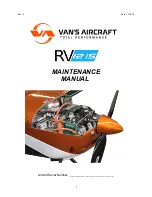
12
The pilot must work actively to keep the glider on the ground in higher winds
(wind speeds from approximately 6 m/s), otherwise the glider may rise above the pilot
unintentionally.
During reverse launch and ground handling, care should be taken that the brake lines
do not rub over the riser. This may cause damage to the riser or lines.
Flying it
The glider is delivered with a standard set-up and its trim speed can reach 38 - 40 km/h
depending on the weight of the pilot. Trim speed (brakes fully released) is the best glide
speed in calm air. The brake lines are used to adjust the speed according to the flight
situation in order to ensure optimum performance and safety. Minimum sink speed on the
Elan 3 is achieved by light braking. During your first few flights, familiarize yourself with
your glider’s speed range and corresponding brake positions and pressures.
NOTE! Always fly with sufficient clearance from the terrain and always keep the brake
handles in your hands!
NOTE! Flying too slowly close to stall speed increases the risk of an unintentional
asymmetric stall or full stall. This speed range should therefore be avoided and used only
on landing during the final stage of the flare.
Accelerated Flight
The Elan 3 is very stable in accelerated flight. C riser control is very effective up to 60 % of
speed bar range. By more than 60% the effectivity decreases. When flying fast than that,
we recommend to control the pitch of the wing actively using a combination of the speed
bar and C riser input. If you feel the nose of the wing start to collapse the first action
should be to release the speed bar impulsively and then make any necessary C riser input.
Release the speed bar first before making any C inputs. Using the combined active speed
bar/C riser control technique you will be able to maximise your speed and glide efficiency
whilst minimising the likelihood of collapses.
Attention: Do not apply brakes when fully accelerated! Braking increases lift near the
trailing edge. The main lift point moves backwards. Due to this the wing can lose stability
for a short time!
Steering - turning
The Elan 3 is a responsive paraglider and reacts directly and instantly to any steering
input. The Elan 3 performs best in turns when it is flown with sufficient speed and weight-
shifting. Enter a turn with good airspeed, weight-shift and then apply the brake. Once
established in the turn, regulate your speed and turn radius with weight-shift and the outer
brake.
Make your first turns gradual and progressive. Too much braking increases the sink rate.
Any weight-shift has a greater effect the more loosely the chest-strap is fastened.
If the brakes are applied more, the bank attitude increases and the glider will fly a fast turn
increasing in steepness, which will eventually become a spiral dive.
Содержание elan3
Страница 1: ...1 ...
Страница 31: ...31 LINE PLAN ELAN 3 ...
Страница 34: ...34 CHECKS Name Company Date Signature Stamp ...
Страница 36: ...36 ...
Страница 37: ...1 ...
Страница 70: ...34 PLAN DE SUSPENTESELAN 3 ...
Страница 74: ...38 CONTROLES Nom Entreprise Date Signature et cachet ...
Страница 76: ...40 ...













































